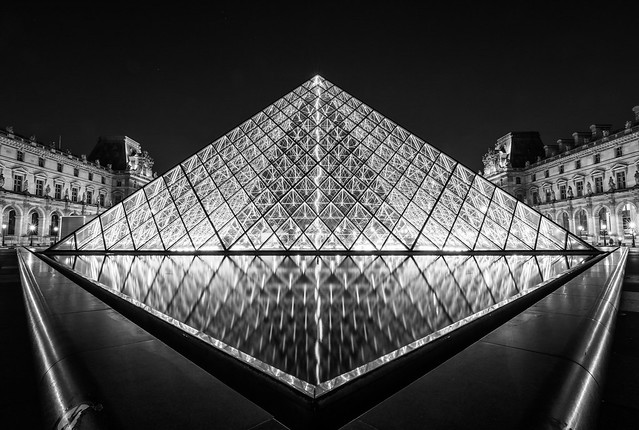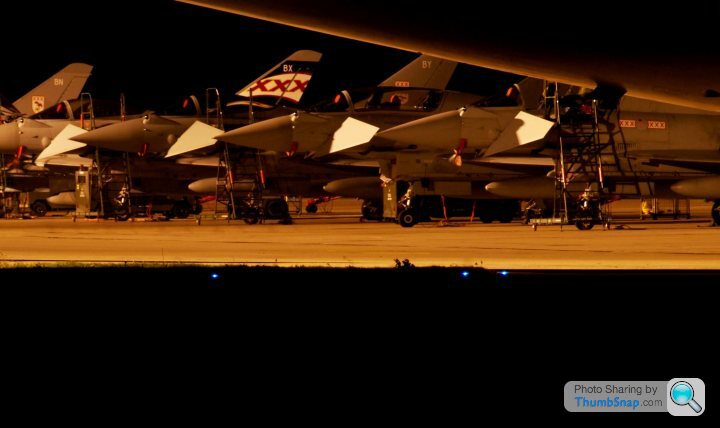Night Photography
Discussion
RobDickinson said:
You already took an f11 shot to blend in the horses so we can ignore those for the stars. Yes ISO 400 or 800 would catch many more stars but not blow them out so you get more colour in them too
And (DD) if you're worried about blending such different exposure values where you might start to get a haze around the highlights, the trick is to raise the ISO but reduce the shutter speed to keep the exposure value the same. ISO100 for 30 seconds is the same exposure value as ISO400 for 8 seconds but the latter will capture many more stars.But good work for getting out there! I visited The Kelpies on my recent flying visit but it rained so I bumped the ISO and shot handheld. Surprised just how big they were!

Redneck
The title sums it up to be honest.
A standard postcard picture.
See more images on - https://500px.com/harrybowden
 Cliched Symmetry by bowden.harry, on Flickr
Cliched Symmetry by bowden.harry, on Flickr
A standard postcard picture.
See more images on - https://500px.com/harrybowden
 Cliched Symmetry by bowden.harry, on Flickr
Cliched Symmetry by bowden.harry, on FlickrTheDoggingFather said:
When doing star trials and general night photography, how do you get stars in focus? I often find that stars show up in images, especially with very wide aperture, that I can't actually see with the naked eye. Any thoughts?
Easiest way is put it on manual focus, live view at 10* zoom (exposure simulation, iso 3200 wide open etc) and find a single bright star manual focus on that then leave focus the hell alone.Doing it in the viewfinder is a mission, set it and chimp then adjust.
AndWhyNot said:
And (DD) if you're worried about blending such different exposure values where you might start to get a haze around the highlights, the trick is to raise the ISO but reduce the shutter speed to keep the exposure value the same. ISO100 for 30 seconds is the same exposure value as ISO400 for 8 seconds but the latter will capture many more stars.
But good work for getting out there! I visited The Kelpies on my recent flying visit but it rained so I bumped the ISO and shot handheld. Surprised just how big they were!

Redneck
Thanks Andrew - great angle But good work for getting out there! I visited The Kelpies on my recent flying visit but it rained so I bumped the ISO and shot handheld. Surprised just how big they were!

Redneck

So run that by me again - iso100 + 30s is equivalent exposure to iso400 + 8s (I'm ok so far) but the latter will capture many more stars - eh?!

RobDickinson said:
With star trails the ISO is key (and aperture though Andy didnt mention that, f11 vs f4)..
A series of 8 second shots all layered means in reality very long exposure times ISO 400 will capture many more stars/trails than ISO 100
I didn't mention aperture. I thought about adding "for any given aperture" but every character matters when typing from iPhone :lol: A series of 8 second shots all layered means in reality very long exposure times ISO 400 will capture many more stars/trails than ISO 100
For startrails I always start with thinking what aperture would be ideal. The answer is almost always the widest, in order to capture as much starlight as possible- although the next thought is how does *that* aperture compromise my image? Could be DoF, could be severe vignetting, could not become apparent until other settings have been chosen.
Next, ISO. Go through the same compromise checklist, but thinking about image quality rather than DoF. There's no way you'll use a truly high ISO at the Kelpies, though, it's too bright and so is the general area.
Finally, with an aperture of X and an ISO of Y what's the longest shutter speed I can get away with? Anything less than 6-8 seconds you might want to think about reducing the light sensitivity of the aperture or ISO. Anything longer than 30 seconds, you might want to think about increasing the light sensitivity.
As Rob says, if you think only of total capture duration then (for any given aperture and exposure duration!) a final image at ISO400 is going to capture many more stars than ISO100.
RobDickinson said:
TheDoggingFather said:
When doing star trials and general night photography, how do you get stars in focus? I often find that stars show up in images, especially with very wide aperture, that I can't actually see with the naked eye. Any thoughts?
Easiest way is put it on manual focus, live view at 10* zoom (exposure simulation, iso 3200 wide open etc) and find a single bright star manual focus on that then leave focus the hell alone.Doing it in the viewfinder is a mission, set it and chimp then adjust.
AndWhyNot said:
RobDickinson said:
With star trails the ISO is key (and aperture though Andy didnt mention that, f11 vs f4)..
A series of 8 second shots all layered means in reality very long exposure times ISO 400 will capture many more stars/trails than ISO 100
I didn't mention aperture. I thought about adding "for any given aperture" but every character matters when typing from iPhone :lol: A series of 8 second shots all layered means in reality very long exposure times ISO 400 will capture many more stars/trails than ISO 100
For startrails I always start with thinking what aperture would be ideal. The answer is almost always the widest, in order to capture as much starlight as possible- although the next thought is how does *that* aperture compromise my image? Could be DoF, could be severe vignetting, could not become apparent until other settings have been chosen.
Next, ISO. Go through the same compromise checklist, but thinking about image quality rather than DoF. There's no way you'll use a truly high ISO at the Kelpies, though, it's too bright and so is the general area.
Finally, with an aperture of X and an ISO of Y what's the longest shutter speed I can get away with? Anything less than 6-8 seconds you might want to think about reducing the light sensitivity of the aperture or ISO. Anything longer than 30 seconds, you might want to think about increasing the light sensitivity.
As Rob says, if you think only of total capture duration then (for any given aperture and exposure duration!) a final image at ISO400 is going to capture many more stars than ISO100.

I always shoot 30s exposures, aperture usually f4 or f4.5 and as little iso as possible. Not very intelligent! I'll put a bit more thought in next time...
Gassing Station | Photography & Video | Top of Page | What's New | My Stuff








